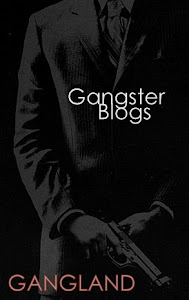six Florencia 13 gang members life in prison sentence appears to bring to a close a prolonged and terrifying spate of violence in the Florence-Firestone district allegedly brought on by orders from a prison gang member in solitary confinement 700 miles away.Beginning in 2004, the unincorporated Los Angeles County area north of Watts was the site of one of the region's worst gang sieges since the early 1990s, evolving into what some residents felt was a race war.The violence left dozens of people dead, including many with no gang affiliation, and required enormous county resources to combat."Things have gotten a lot better," said Chris Le Grande, pastor of Great Hope Missionary Baptist Church on Compton Avenue in Florence-Firestone.
U.S. District Judge David Carter sentenced Florencia member Francisco Flores, 24, to life in prison on Wednesday, saying that he "preyed on victims because they were black and for no other reason," according to a U.S. attorney's office news release.
Earlier this year, Carter had handed out life sentences to Florencia members Jesse Vasquez, 36; Alberto Hernandez, 28; Gilberto Oliva, 41; Manuel Hernandez, 27; and Noe Gonzalez, 28. Arturo Cruz, 34, was sentenced to 60 years in prison. Jose Gonzalez, 36, received a 20-year sentence. Two more gang members are scheduled to be sentenced later this month. An 11th defendant, Alejandro Rincon, will be retried in April.
Their trial, which took place in federal court in Santa Ana in 2008, grew from an indictment of 104 Florencia gang members on charges that included racketeering, conspiracy to sell drugs and murder.Of those indicted, 94 have pleaded guilty or have been convicted. Four more await trial; two have died and four are fugitives.The case showed the remarkable power the Mexican Mafia prison gang holds over Southern California Latino street gangs. Prosecutors alleged that Mexican Mafia member Arturo "Tablas" Castellanos essentially created a crime wave in the Florence-Firestone district.Castellanos was not indicted because he is already serving a life prison term in a maximum security cell in Pelican Bay State Prison. He hasn't been on the streets since 1979.Yet he wrote letters, introduced as evidence at the trial, that presumed to control a street gang, most of whose members had never seen him.Castellanos ordered gang members to stop rampant infighting; to tax drug dealers in their neighborhoods, as well as prostitutes, fruit vendors and vendors of phony ID cards in nearby Huntington Park; and to funnel the proceeds to him and other mafia members. He also ordered the gang to attack the local Crips gang, whose members are black."The Mexican Mafia has a powerful grasp on these [Latino] gangs," said Peter Hernandez, the assistant U.S. attorney who prosecuted the case.
"The prison system is a segregated place. Those rules and letters from Castellanos attempted to adhere those prison rules to the street," he said.
As Castellanos' letters appeared on the street in the fall and winter of 2004, Florencia 13 erupted in a spate of violence against African Americans.
"They just went out and started shooting" at black people, Hernandez said.
East Coast Crips responded with shootings of their own, often targeting Latinos who were not gang members.Few actual gang members died. Instead, residents said, they lived amid a race war.
GANGWORLD CUSTOM SEARCH

Custom Search
Subscribe to:
Post Comments (Atom)













0 comments:
Post a Comment